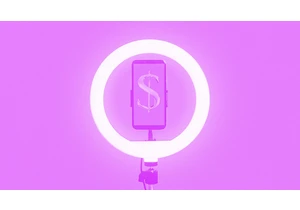Can nuclear energy, solar and wind farms, and carbon capture scale fast enough to save the planet? GE Vernova CEO Scott Strazik details how green energy is evolving in 2024. GE Vernova is a new company spun out from General Electric, and helps power around a quarter of the world’s electricity. Strazik explains how today’s electrical grid limits renewable energy’s potential, and why it desperately needs a “new brain.”
This is an abridged transcript of an interview from Rapid Response, hosted by the former editor-in-chief of Fast Company Bob Safian. From the team behind the Masters of Scale podcast, Rapid Response features candid conversations with today’s top business leaders navigating real-time challenges. Subscribe to Rapid Response wherever you get your podcasts to ensure you never miss an episode.
GE has been around a long time. GE Vernova is brand new. You made up the word ‘Vernova’. How did you make this choice?
GE Vernova is a two-month startup at this point. We spun out and separated from General Electric on April 2nd. And today, our equipment powers about 25% of the world’s electricity.
The first question we had to decide is: Did we want to retain the “GE” in our branding? Because the reality is the world is changing and we needed to change with it. And that is where “Vernova” came from. Verde—Green. Nova—New. New green innovation.That doesn’t mean we’re running away from our past. We’re proud of that. But with the objectives and the challenges that the world has ahead, there’s gonna have to be a different way to operate. And that was explicit to all of our stakeholders with Vernova that this is a new company. This is a new day.
Not all energy company leaders have always agreed that human actions impact climate change. How does GE Vernova think about it?
The time is now. I think the good news in the world is we’re kind of past most leaders denying the dynamic of climate change. This is real and time is not in our favor. We can set many long-term goals and they’re important. But we need to act now. We need to use the technology that exists today to drive action and move the needle. Because if our goals are too far into the future and too grandiose, it may not matter if we get to those, if we don’t make progress today.
And the technology exists today?
The technology exists to a larger extent than the world appreciates. The challenge is how do we industrialize that technology and scale. We’ve built up an electric power system over a century that we need to transform in 20 years max. We need to rebuild this infrastructure faster and in a more efficient way than the world has done before.
AI would be a big part of the energy grid of the future. There are AI data centers that use a tremendous amount of energy. And they need more sustainable and predictable energy sources. One of them that’s being discussed is nuclear power, specifically small modular reactors. So how close is that technology? How safe is it?
AI is critical to where the sector is going. In the U.S., there hasn’t been much demand growth for electricity in the past 20 years. AI and the data centers are one of multiple drivers that are changing that dynamic. Demand is up. One of the ways to solve that demand growth is definitely small modular reactors. And for us, we’ll commission the first 300-megawatt small modular reactor in Canada in 2029.
Now, those early projects are expensive, but the point behind a small modular reactor is that by doing the exact same small 300 megawatt block of power many times, we’ll lower the cost curve in a different way than nuclear has experienced in the past. Because the reality is there are very few nuclear plants in the world that have been on time and on budget. That’s because every one has been uniquely different. By modularizing to a smaller solution, we have a high degree of confidence that we’ll be able to lower that cost curve. So as we get into the middle of the next decade, this starts to become a very material part of the electric power system.
Wind power is a core offering for GE Vernova. Recently, states have seen their offshore wind projects fall through. Where are you on offshore wind?
It’s complicated but important. The past two years have been full of scary headlines for offshore wind and the industry economics have definitely been challenged. All that said, when we look ahead over the next 5 to 10 years, the world needs offshore wind. Places like the Northeast need offshore wind to both electrify and decarbonize. So we believe offshore wind is critical for the future. It’s going to be more expensive than onshore wind. It’s going to be more expensive than solar. But we need to think about the correct comparisons, which is . . . Is it more expensive than a new nuclear plant? Is it more expensive than carbon capture? There’s no question in our mind—offshore wind is a more economical answer.
It sounds like the right renewable solution for each location has to be assessed based on both the conditions and the economics that are available in that situation?
That goes back to driving the efficiency that the world needs. Where you have good wind and solar conditions, you’re gonna need to take advantage of that resource every day. In the same token, we’re investing a lot of money into carbon capture, where that makes sense. You’ve got to use the resources you have, and to transform this electric power system, it’s going to require an “all the above” mindset. At Vernova, we don’t walk in the room wearing a wind hat, a gas hat, or a nuclear hat. We play across these technologies. We want to apply the most efficient economic technologies to what the location has.
GE has been around for a long time and has a certain way of operating. I know that you want to make things faster and more like a startup. So how do you do that in an organization that’s been around a long time and is as big as Vernova?
I think great companies find a way to problem solve and deliver in the near term while finding the oxygen or the space to work on the long term breakthroughs. And at the heart of the company, we’re trying to create a culture that can feel protected to take big swings on the stuff that can really change the world.
My experience with GE Is that we never lacked ambition. But at times, culturally, we may not have found the right balance between protecting to deliver on the near term while nurturing the long-term breakthroughs. And that’s a lot of what we’re working our way through right now with Vernova.
I’m two months into a completely new experience as a public company CEO. When you’re inside a big company, relative to what I’m doing today, I have the privilege now of having more capacity to navigate the outside world. And we have less internal dynamics to juggle. So that’s empowering. But it also is a responsibility because the reality is General Electric was a company that I was so proud to be part of because we led in industries that really matter: healthcare, aerospace, power . . . But when you play across many industries, sometimes too many goals can be no goals at all. For us now as a purpose-built company in the energy transition, the expectation is to lead this industry forward. And that’s exactly what we intend to do.
Climate change is so big, and you need to progress and keep everyone’s energy up. But change is so slow. How do you think about balancing to keep people urgently moving forward and patient at the same time?
Although some of our solutions are long-cycle, the frequency and intensity of what we’re seeing in the world every day because of climate change is becoming more rapid based on what we see with extremes of weather. So I think it’s quite easy every day to get motivated in a long-cycle business to do this work because it’s work worth doing.
Melden Sie sich an, um einen Kommentar hinzuzufügen
Andere Beiträge in dieser Gruppe

Yahoo’s bet on creator-led content appears to be paying off. Yahoo Creators, the media company’s publishing platform for creators, had its most lucrative month yet in June.
Launched in M

From being the face of memestock mania to going viral for inadvertently stapling the screens of brand-new video game consoles, GameStop is no stranger to infamy.
Last month, during the m

The technology industry has always adored its improbably audacious goals and their associated buzzwords. Meta CEO Mark Zuckerberg is among the most enamored. After all, the name “Meta” is the resi

Even as AI becomes a common workplace tool, its use in

Finding a job is hard right now. To cope, Gen Zers are documenting the reality of unemployment in 2025.
“You look sadder,” one TikTok po

Hiding your address, phone number, and other details is easier than you might think.
